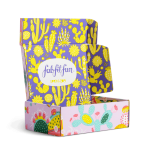
In a world saturated with digital screens and instant entertainment, there’s something profoundly magical about the simple act of unwrapping a fresh box of crayons. The crisp cardboard, the orderly rows of colorful wax sticks, the faint waxy scent that promises endless creative possibilities – this experience begins not with the first stroke on paper, but with the crayon packaging box itself. Far from being just a container, today’s crayon boxes are thoughtfully designed ecosystems that enhance the artistic journey, protect the vibrant tools within, and inspire both children and adults to explore the boundless landscape of imagination.
The evolution of crayon packaging tells a fascinating story of design meeting functionality. Gone are the days of flimsy cardboard that tears at the seams after a few openings. Modern crayon boxes feature reinforced construction, secure closures, and intuitive opening mechanisms that withstand the enthusiastic hands of young artists. Many now incorporate plastic trays that keep each crayon securely in place, preventing the frustrating jumble of broken pieces that once haunted art drawers. This attention to durability ensures that the packaging survives as long as the creative spirit it contains.
Beyond mere protection, contemporary crayon packaging serves as an interactive launchpad for creativity. Leading manufacturers have transformed the inside covers into color guides, drawing prompts, and educational content. Some boxes feature color wheels demonstrating how to mix shades, while others include simple drawing tutorials or challenge users to create specific scenes. This transforms the packaging from passive container to active participant in the creative process, engaging children from the moment they open the box and providing guidance when inspiration needs a nudge.
The psychological impact of well-designed crayon packaging cannot be overstated. The moment a child receives a new box, their eyes light up with anticipation. The smooth, unbroken rows of crayons represent infinite potential – every color pristine and full of promise. This presentation matters profoundly because it frames the entire creative experience. A thoughtfully designed box communicates that the contents are valuable, that creativity is important, and that what’s inside deserves care and respect. This subtle messaging helps foster an appreciation for art supplies and the creative process itself.
Environmental considerations have become increasingly central to crayon packaging design. Many manufacturers now use recycled materials and soy-based inks, with boxes designed for easy recycling after their primary purpose is served. Some innovative companies have developed plant-based plastics for tray inserts, while others have created packaging that can be repurposed as storage containers, picture frames, or even small dioramas. This eco-conscious approach teaches young users about sustainability while reducing the environmental footprint of childhood creativity.
For educational institutions and art programs, crayon packaging plays a crucial practical role. Boxes designed with classrooms in mind often feature reinforced construction to withstand daily use by multiple children. Clear labeling systems help teachers quickly identify color sets, while stackable designs optimize storage in crowded art supply closets. Some manufacturers even offer customizable packaging, allowing schools to add their logos or specific color combinations tailored to their curriculum needs.
The unboxing experience itself has become an art form in crayon packaging design. From the satisfying slide of a drawer-style box to the flip-top cases that snap securely shut, the tactile pleasure of accessing crayons enhances the overall creative ritual. This sensory engagement – the sound of the box opening, the sight of perfectly arranged colors, the feel of the packaging materials – creates lasting memories and establishes positive associations with artistic expression that can last a lifetime.
As we look to the future, crayon packaging continues to evolve with technological integration. Some manufacturers are experimenting with augmented reality features that bring coloring pages to life when viewed through a smartphone app. Others are incorporating QR codes that link to online art tutorials or creative communities where young artists can share their work. These innovations bridge the gap between traditional hands-on creativity and the digital world children inhabit, making the humble crayon box a gateway to both analog and digital artistic exploration.
In our increasingly digital age, the physical experience of holding a well-crafted crayon box, selecting the perfect color, and making that first mark on paper represents a meaningful connection to tangible creativity. The crayon packaging box serves as the guardian of this experience – protecting the tools, inspiring the artist, and honoring the timeless human impulse to create. So the next time you open a box of crayons, take a moment to appreciate not just the colors within, but the thoughtful design that brings them to your fingertips, ready to transform blank pages into vibrant expressions of imagination.




Leave a Message